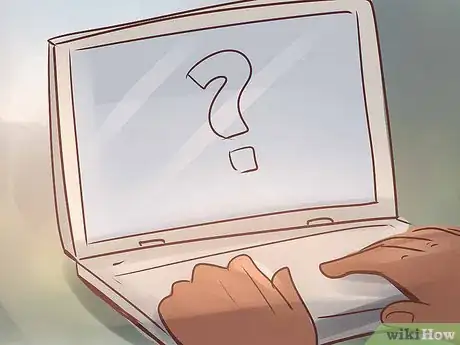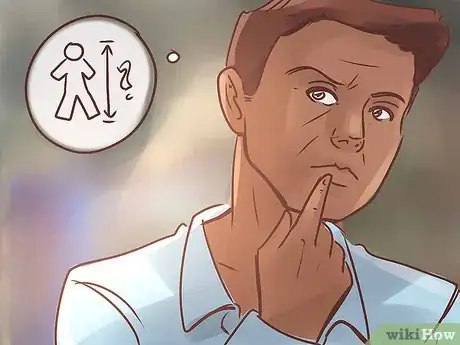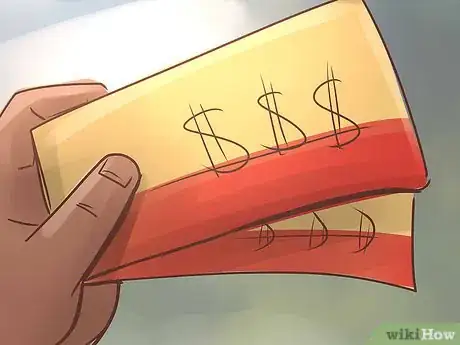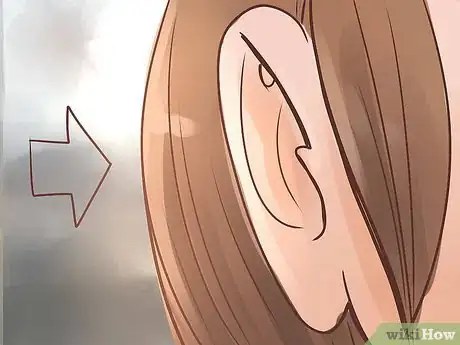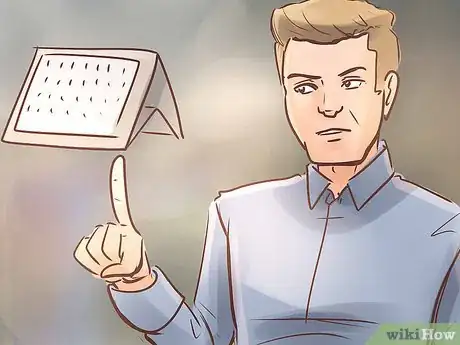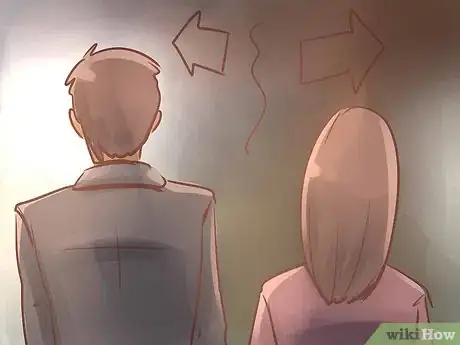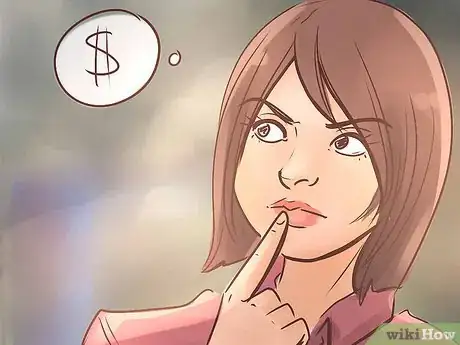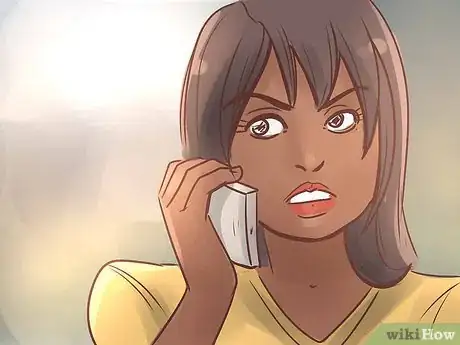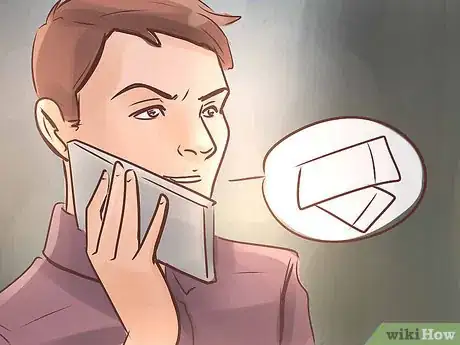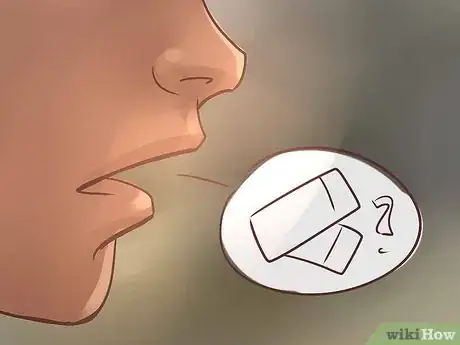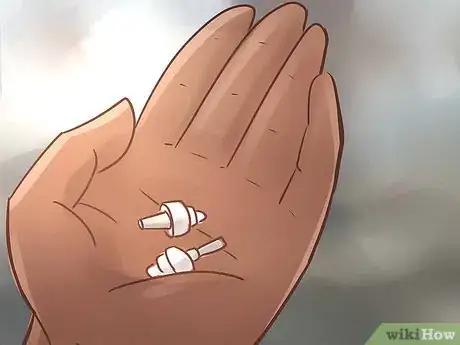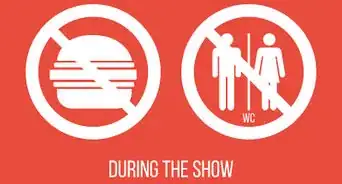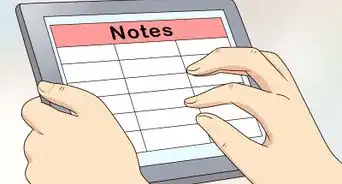This article was co-authored by wikiHow Staff. Our trained team of editors and researchers validate articles for accuracy and comprehensiveness. wikiHow's Content Management Team carefully monitors the work from our editorial staff to ensure that each article is backed by trusted research and meets our high quality standards.
There are 10 references cited in this article, which can be found at the bottom of the page.
This article has been viewed 146,644 times.
Learn more...
When you’re planning to go to a concert, the seats that will be great for you depend on a variety of factors. The closest seats aren’t necessarily the best, unless your only concern is being in the front row and nearest to the band. In fact, if you want the clearest sound, the cheapest seats are often the best. Besides sound quality, you will want to consider the venue, visibility, and your height to decide which seats will be great for you. Purchasing tips can help you to obtain tickets for the seats that are great for your individual situation.
Steps
Scoping out the Venue
-
1Find out where visual obstructions are. You don’t want to purchase seats that you think are great and end up having a blocked view. See if the venue’s online seating chart mentions where obstructions of view occur. If it doesn’t, contact the venue.
- Try asking, “Which seating areas have obstructed views? Could you tell me where I can find a map that marks which parts of the seating chart have unobstructed views of the stage?”
-
2Research where the best seats are at the venue you’re attending. The internet is full of articles and reviews about the best places to sit at specific venues. Go to a search engine and type in the name of the venue. Then add the keywords “best seats” and search the web.
- There are interactive seating charts online for many venues. Open a seating map through a website like SeatGeek or Ticketmaster. When you select a specific seating area, the chart will open an image of what it will look like from the vantage point of those seats.
Advertisement -
3Look for centralized box seats. Box seats are generally better in the middle; if they’re off to the side you may only be able to see part of the stage. Box seats offer the advantage that there won’t be audience members ahead of you blocking your view. Typically there is more room in box seats as well. Well-placed box seats can be the best seats in the venue.[1]
- Box seats may even be closer to restrooms and refreshments – consult with a map of the venue.
-
4Find out if the venue has both a mezzanine and a balcony. If so, the balcony will be higher up and further from the stage. The balcony seats will probably be the cheapest choice, but won’t be great seats. You would probably need to bring binoculars or opera glasses. If the theater has just a single upper level, it’s usually called the “balcony.”[2]
- The first couple of rows in the mezzanine are usually closer to the stage than orchestra seats. From the mezzanine you can see the entire stage.
-
5Avoid rows below upper balcony overhangs. Venues that are designed like classic Greek theatres, for example, have upper balconies that protrude out over the last several rows of ground floor seats. This design actually muffles the sound those ground floor seats receive.[3] It can also obstruct your view of the top of stage sets.[4]
-
6Consider upper-level seats. If tickets are tough to get, you might have to opt for whatever seats you can snag. There can be advantages to upper level seats. You may not want to choose upper level seats if you have vertigo or a fear of heights that’s easily triggered.
- You should be able to see the whole stage, although it will be a distance away. There may be a big screen where you can see up-close shots of the band.
- You’ll likely be on an incline so that the people in front of you won’t block your view.
- Sound floats upward well to balconies.
- Snag a side view. Tiered riser sections in front of the stage on the right or left can offer good views and sound. Being on an angle helps you to see when you’re sitting and other people are standing.
Incorporating Your Preferences
-
1Consider your height. If you’re short and get floor seats, you may not be able to see with people standing in front of you. Avoid orchestra seats in the center if you’re short. You could be blocked by large or tall people in front of you, and without an angled view you won’t be able to look around them.[5]
- If you’re tall, floor seats and centralized orchestra seats should be fine for you. However, consider getting an aisle seat if you have long legs, as it might be difficult for people entering and leaving their seats to get past you.
-
2Think about the audience before choosing floor seats. Floor seats are usually the most expensive seats, but are also considered some of the worst seats – it all depends on your personality. What is the vibe of the crowd that the performers attracts? Is it likely to be a laid back or highly energetic crowd?[6]
- Would you expect a mosh pit to occur up front? For example, heavy metal, rock and rap concerts often have moshing, as well as some hip-hop concerts.
- People in the floor seat area may crowd together, sweat, and even be pushy. They will often be holding up cell phones to capture footage. If you want an active, electric feeling and don’t mind the scene being intensely social, floor seats may work for you.
-
3Weigh pros and cons of front row seats. If all you care about is being as close to the performers as possible, and price is no object, then front row seats may be your preferred choice. Keep in mind that if you have seats up front, you may not be able to see everything. The stage’s height is one factor: it can be high for shows at big stadiums. The stage may be obstructed by production equipment.
- If you’re sitting in the front row, you’ll probably be looking up most of the time and may get a sore neck. The second or third row is often better than the front row. If you want to choose the front row, consider sitting to the right or left instead of the center, as you will likely have a clearer view of the stage.[7]
-
4Select seating for optimum sound. If your top priority is sound, consider middle central seating. Surfaces towards the front, back and sides of the venue can break up the acoustics, especially by walls. Look for seats near the soundboard: engineers will mix sound for the entire location based on what they’re hearing.[8]
- Sound waves mostly project in the direction they’re pointed, so if you find out where the speakers are, aim to be in their line of sight for the best sound.
Getting Tickets
-
1Buy early. Check for presales, for example through the band’s fan club, or promotional offers on the artist’s website. Find out exactly when the tickets will be going on sale to public. That way if you can’t score presale tickets, you’ll be ready to try the public sale as soon as it opens.
- Sign up for email lists of local radio stations, venues, and the band’s website so that you’ll be notified about any upcoming contests or special offers. You can also opt to get notifications from any of those sources’ official social media profiles.
-
2Split up your seats. You have a better chance to get good seats if you buy less tickets, especially if you’re buying just one. You could always carpool with other concert attendees and then split up to your different seats at the venue. Make sure to have a plan for where to meet back up after the show.
-
3Buy through a ticket distributor’s website or app. Don’t reload the page on the same device. If you get a “wait” icon that indicates your computer is connecting to the site, you should wait. If you reload the page, you can lose your place in the virtual line. You can, however, try connecting with a different device while you’re waiting for the browser to load.
- Avoid sharing a Wi-Fi network, which can slow you down.
- Don’t try to use multiple browsers on the save device, or the website may think you’re a robot and block your IP address.
-
4Shop for VIP packages. If you can afford them, get VIP tickets. These are often the best seats in the house, and come with extra perks. For example, you might get an autograph, a meet-and-greet with the artist, or a fan club membership.
-
5Don’t assume a high price means good seats. Generally, seats become less expensive the farther they get from the stage. However, that’s not always the case. Sometimes seats are priced higher just so that they don’t appear to be bad seats to the buyer.[9]
- If there are different prices for seats in the same section and row, go with the cheaper tickets.
-
6Verify the telephone number if you’re calling in for tickets. You may want to get more than one phone ready to call with. Practice hanging up and redialing with each phone. Landline phones will have a different way of disconnecting and redialing than cell phones do.
-
7Purchase other tickets first. If you’re willing to buy tickets for another, unrelated show, it can give you a leg up on the competition. Call a bit before ticket sale time, and select the option that lets you buy tickets through a human operator. When the sales representative answers, order tickets for a show that is available already, since the tickets you really want will not be on sale for another few minutes.
- Since you’ll already have the representative on the line, you can ask her for tickets to the other concert once the proper time is reached. This way you won’t have to spend time trying to get through on the phone when ticket sales begin, because you’ll already be connected to a live representative.
- Say that you want the best tickets available for the second show.
-
8Check on the day of the show. If you haven’t been able to get tickets by the day of the show, find out from the theater if there are any unclaimed house seats. These prime seats are reserved for creative teams, producers and artists, and if any are unclaimed the VIP seats may be sold to the public.[10]
- This sale can happen as early as when the box office opens, up to as late as an hour before the curtain goes up.
Attending the Concert
-
1Show up early for general admission tickets. It’s important to arrive early because general admission tickets may not be a guarantee of seating. Also, they are first come, first serve, and you want to get the best seats you can! General admission tickets are seating or standing areas without assigned seats. There may be section, row, or seat numbers on the tickets, but if they say “General Admission” than the numbers are for inventory purposes and don’t represent your actual seats.
- The doors may open an hour or even several hours before the show begins. Plan to get there as early as possible and wait outside for the venue to open if necessary.
-
2Don’t plan to ditch your seats for closer ones. “Seat poaching” happens in places like concerts and airplanes, and is discouraged by the respective authorities. It isn’t fair to other people who are staying in their assigned seats. Furthermore, you can be tracked down by ushers and get in trouble with the venue.
- Empty seats may be meant for accessibility for disabled people, or reserved for employees who will come and go.[11]
-
3Look for upgrades. Sometimes tours, fan clubs or venues will have seat upgrade contests, which you can search for online. In some instances, tour staff may approach people who are already seated far away from the stage and give upgrades to loyal fans who can answer band trivia. You can also install an app, such as Pogoseat, that gives you the ability to request concert seat upgrades.
-
4Bring earplugs. It may seem counterintuitive, but earplugs can actually help you to hear better at a concert. They take the edge off the sound so that you can enjoy it. They also reduce your chances of ringing in the ears and hearing loss.[12]
Community Q&A
-
QuestionHow early should I go to a concert with assigned seats?
 Community AnswerIf the seats are assigned, get there about 20 minutes beforehand, to find your seat and have time to go the bathroom and get a drink or snack.
Community AnswerIf the seats are assigned, get there about 20 minutes beforehand, to find your seat and have time to go the bathroom and get a drink or snack. -
QuestionWhat is zone seating and does it mean I can buy tickets early?
 Community Answer“Zone Seating” refers to tickets guaranteed to either be within or better than a certain section and/or row. The seller hasn't received the tickets yet so they can't give you the exact seat numbers. You may be able to get tickets early this way, but you won't be able to request specific seats.
Community Answer“Zone Seating” refers to tickets guaranteed to either be within or better than a certain section and/or row. The seller hasn't received the tickets yet so they can't give you the exact seat numbers. You may be able to get tickets early this way, but you won't be able to request specific seats.
Warnings
- Mosh pits are dangerous and can even be fatal.⧼thumbs_response⧽
- Don't try to bribe the ushers for better seating. They do not have the authority to change tickets, and ending up with an angry usher can make for a bad concert experience.⧼thumbs_response⧽
- Don’t buy tickets if the seat numbers aren’t disclosed.[14] The exception to this rule is if the seating isn’t assigned, as in general admission, unreserved seating, or open seating.⧼thumbs_response⧽
References
- ↑ http://www.stageelf.com/choosing-a-seat.html
- ↑ http://www.stageelf.com/choosing-a-seat.html
- ↑ https://books.google.com/books?id=mfxgGNCV62IC&lpg=PA78&dq=concert%20seats&pg=PA78#v=onepage&q=concert%20seats&f=false
- ↑ http://www.stageelf.com/choosing-a-seat.html
- ↑ http://www.stageelf.com/choosing-a-seat.html
- ↑ http://www.gq.com/story/kanye-west-saint-pablo-tour-floor-seats-worth-it
- ↑ http://www.ebay.com/gds/How-to-Concert-Tour-Show-Guide-Best-Experience-Tips-/10000000000967628/g.html
- ↑ http://www.menshealth.com/best-life/which-are-best-seats-concert-hall
- ↑ https://books.google.com/books?id=4Fs1TrLjWhUC&lpg=PT18&dq=concert%20seats&pg=PT19#v=snippet&q=orchestra&f=false
- ↑ https://books.google.com/books?id=4Fs1TrLjWhUC&lpg=PT18&dq=concert%20seats&pg=PT19#v=snippet&q=orchestra&f=false
- ↑ http://www.wqxr.org/#!/story/225082-it-ethical-take-empty-seat-theater/
- ↑ http://www.cbsnews.com/news/wearing-earplugs-to-concerts-may-prevent-hearing-loss/
- ↑ http://www.stageelf.com/choosing-a-seat.html
- ↑ http://www.usatoday.com/story/money/personalfinance/2013/04/10/concert-ticket-sales-resales-scalping/2068661/
About This Article
The best concert seats for you will depend on what you’re looking to get out of the experience. For example, balcony seats tend to be the cheapest, but are also furthest from the stage, whereas floor seats are pricier and closer, but might mean having your view blocked by someone taller than you. You should also make sure to avoid rows below balcony overhangs, which muffle sound, and consider upper-level seats instead, as sound floats upward. Explore your options by looking at an online seating chart for the venue or by searching for reviews of their best seats. For more tips, like how to look for seat upgrades, read on!



